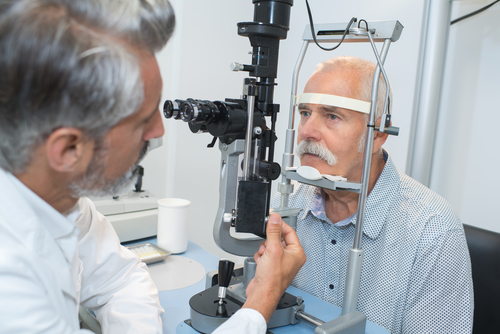How Often Should Glaucoma Screenings Occur?
July 11, 2024
Glaucoma is one of the leading causes of vision loss worldwide. Testing for glaucoma is easy and painless and can allow your eye doctor to detect the condition before it causes vision problems.
Regular glaucoma screenings, particularly if you are at increased risk of developing the condition, can dramatically reduce your risk of permanent vision loss. Keep reading to learn how often you should have a glaucoma screening!
What is Glaucoma?
Glaucoma is a serious but treatable eye condition that causes damage to the optic nerve. Pressure on the nerve causes progressive damage that leads to vision loss and eventually blindness.
Experts don't fully understand what causes glaucoma, but excessive eye pressure is one of the common factors in many glaucoma cases. Anyone can develop glaucoma, but certain factors can increase your risk of developing the condition, including:
- Being fifty-five or older
- Black, Asian, or Hispanic heritage
- Family history of glaucoma
- Corneas that are thin in the center
- Extreme nearsightedness or farsightedness
- History of eye injury
- Previous eye surgery
Certain underlying health conditions, such as diabetes, migraines, high blood pressure, and sickle cell disease, can also increase the risk of glaucoma.
What Are Glaucoma Screenings?
Early-stage glaucoma typically doesn't cause any discomfort or vision changes, so you may not know that you have the condition. Routine eye exams can identify early signs of glaucoma before it starts to damage your vision.
Early detection is critical because the sooner you begin treatment, the lower the risk of vision loss. Annual eye exams are the best way to detect glaucoma.
Many health insurance plans cover yearly eye exams to check eye health. Depending on your risk factors and eye health, your eye doctor may recommend a personalized schedule.
However, in general, the frequency of glaucoma screenings should be based on your age:
- Ages 40 to 54, every one to three years
- Ages 55 to 64, every one to two years
- Ages 65 and older, every six to 12 months
What Happens During a Glaucoma Screening?
During a glaucoma screening, your eye doctor will perform a variety of tests, including:
Intraocular Pressure Measurements
During this test, your eye doctor will give you special drops to temporarily numb the surface of your eye. You'll sit in front of a device that uses a small instrument to touch the surface of your eye and measure the pressure.
Dilated Eye Exam
During a dilated eye exam, your eye doctor gives you eye drops to fully open your pupil. This allows the eye doctor to examine the back of your eye and check the health of your retina and optic nerve.
Vision Tests
Vision tests can identify if you are losing visual acuity or have a limited range of vision. Loss of peripheral vision is a common symptom of glaucoma.
Measuring Corneal Thickness
This test is similar to measuring eye pressure. Your eye doctor uses a special instrument to touch your numbed eye to measure how thick your cornea is.
Optic Nerve Imaging
During a dilated eye exam, your eye doctor might use a machine called optical coherence tomography to capture an image of your optic nerve. You rest your chin on a machine and look into a lens that takes pictures of your eye.
Your eye doctor can use the images to check for signs of many eye conditions, including glaucoma.
What Are the Symptoms of Glaucoma?
If you don't get regular screenings, glaucoma can progress without you being aware of it. In the beginning stages, open-angle glaucoma does not cause many obvious symptoms.
Without early detection, the first sign of open-angle glaucoma is loss of peripheral vision. Central vision loss is the main symptom of severe glaucoma.
Treatment can slow or stop the progress of the condition, but it cannot restore lost vision. Vision loss from glaucoma is permanent.
A less common type of glaucoma is called angle-closure glaucoma. It typically has a very sudden onset.
The symptoms of acute angle-closure glaucoma include:
- Severe headache
- Severe eye pain
- Blurred vision
- Halos or colored rings around lights
- Eye redness
- Nausea or vomiting
Angle-closure glaucoma is a medical emergency. If you suspect you have acute angle-closure glaucoma, call your doctor right away.
You will need immediate treatment to protect your vision.
What Glaucoma Treatment Options Are There?
If you have glaucoma, there are treatments that can help. Beginning treatment before glaucoma affects your vision can reduce the risk of vision loss from the condition.
You may need to stay on glaucoma treatments for the rest of your life. Treatments include:
Eye Drops
Prescription eye drops can reduce eye pressure and lower the risk of optic nerve damage. Drop can decrease eye pressure by improving natural fluid drainage in your eye or reducing the amount of fluid your eye produces.
Oral Medications
If drops alone are not effective, your doctor may prescribe oral medication that decreases fluid production in your eye. You may need to take medication in addition to using eye drops.
Laser Treatments
A simple laser procedure called trabeculoplasty may improve eye drainage. This is an in-office procedure that your eye doctor can perform.
They will use a small laser to improve drainage so fluid doesn't build up as quickly.
Glaucoma Surgery
Another option for improving drainage in the eye is a surgical trabeculoplasty, which is similar to a laser trabeculoplasty. Other surgical options include surgery to place tiny tubes in your eye to facilitate drainage or minimally invasive glaucoma surgery (MIGS).
Your eye doctor will tell you which procedure is best for you.
Are you due for an eye exam and glaucoma screening? Schedule an appointment at Carroll Vision Center in Westminster, MD, today!



